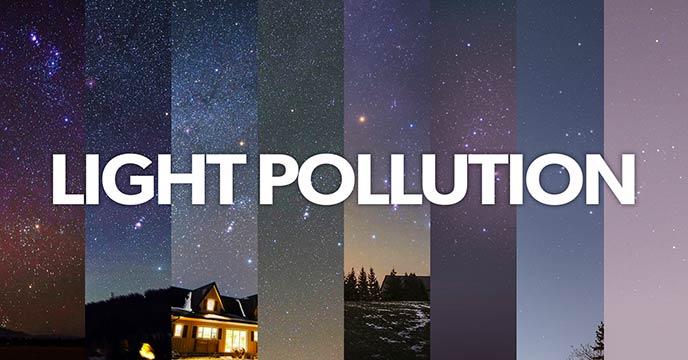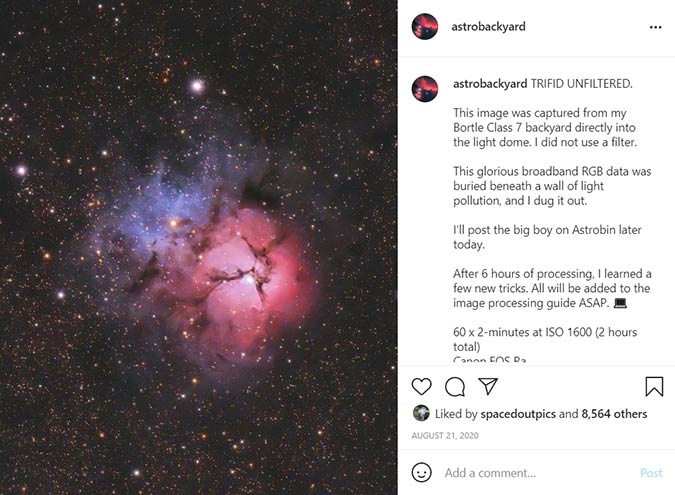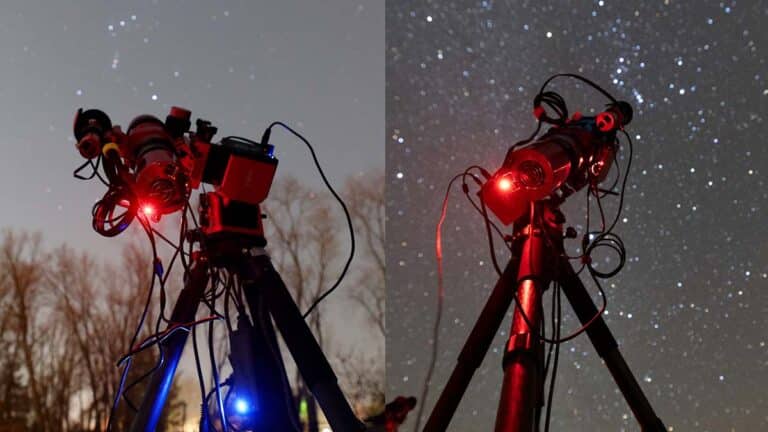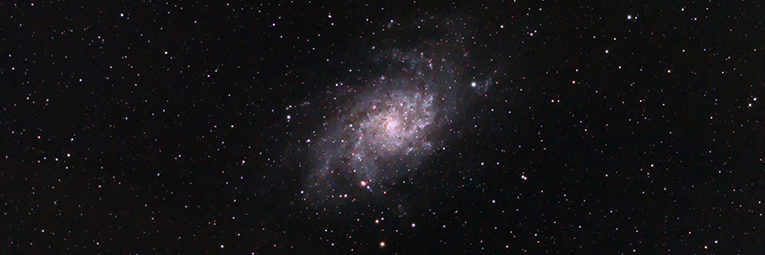Light Pollution is Ruining Our Night Sky

Have you ever looked at a brightly lit building or street light in your neighborhood and thought it was excessive? You know, light shining in all directions or perhaps in your bedroom window, rather than only lighting up the intended area. That is light pollution.
Light pollution is misdirected excess/obtrusive outdoor artificial light in a night environment. Too much light pollution washes out the night sky, interferes with astronomical research, disrupts ecosystems, wastes energy, and has adverse health effects.
Urban towns, cities, and suburbs are known for their excessive light. These light sources can be found by way of exterior/interior lighting, advertising, streetlights, parking lots, etc.
For non-stargazers, over-lighting or light pollution is likely a new concept and one they might not consider a problem. Even worse though, is the absence of a dark star-filled night sky is not even missed.
Over-lighting has become a global problem in need of a paradigm shift. Before we can make positive change, we must understand the negative impacts of light pollution and strengthen our connection with the natural environment.
Light pollution from a commercial greenhouse turns this Bortle Scale Class 3 location into an 8.
Types of Light Pollution
There are several different types of light pollution, including:
- Glare: light reflecting off a surface making it difficult to see
- Skyglow: light shining up into the atmosphere creating a yellow halo
- Light trespass: light shining outside the intended area or where it is not needed
- Clutter: bright, excessive groupings of light sources
- Over-illumination: the use of too much or excessive light

Often when discussing the issue of light pollution, people discuss the matter of using lighting for safety reasons. While there has been no evidence from studies to suggest that lighting increases safety, the bigger issue is around selecting more efficient lighting to light up only the areas we need, when we need them.
Before and after neighborhood lighting change to direct light downward, where it is needed. IDA/Richard O’Brien
Light Pollution and the Night Sky
According to the International Dark-Sky Association (IDA), everyone had access to a starry night sky less than 100 years ago.
Now, there are millions of people living in urban cities that will never see the Milky Way from where they live or are stuck living under a permanent sky-glow.
For example, on August 14, 2003, nearly 50 million people across Ontario and Eastern United States experienced a massive blackout and were left without power for a few days.
During this time, even in the core of downtown Toronto (which has a population of 250,000), there were people seeing the Milky Way for the first time ever.
Light pollution before and after from the suburbs of Toronto during the 2003 blackout. IDA/Photo by Todd Carlson
Light pollution alters our view of the sky and makes it difficult to see smaller or faint objects.
It washes out stars, constellations, galaxies, and nebulae, reducing the overall contrast between these objects and the darkness of the sky, impacting astronomical research and the hobby of astrophotography.
Light Pollution and Astrophotography
The night sky viewed from a light-polluted city will not compare to the detail of what can be seen from truly dark skies.
While large objects, like planets and prominent constellations, can be seen from the city, fainter objects or deep-sky objects will need to be captured under darker skies.
Astrophotography from a light-polluted area has its challenges. A light pollution filter is often your first line of defense against a washed-out sky.
8 levels of light pollution. The Orion constellation captured from Bortle Scale Class 1-8 locations. Credit to: Josh Wilson/ Richie Mills/ James Markgraf/ Remco Kemperman/ Robin Lim/ Andrew Wryghte/ Carsten Groinig/ Abhiroop Bhattasali
Popular light pollution filters include the Optolong L-Pro and Astronomik CLS. The filters do their best to ignore the bandpasses of the visible associated with artificial light.
Some photographers insist that shooting without a filter is best. In this scenario, you’ll need to have a solid game plan for processing the image to reveal your deep-sky object from a bright sky.
Deep-sky astrophotography is arguably much easier to accomplish from a light-polluted location than wide-angle shots or nightscapes.
Capturing distant objects through a telescope has the advantage of isolating a very small patch of the bright sky, while a Milky Way panorama shows off nearly the entire sky.
separating a Galaxy or Nebula from a brown sky is easier than digging out each star and constellation of a nightscape photo. For this reason, I do not recommend capturing wide-angle photos of the night sky from a light-polluted location.
Bortle Scale
Astrophotographers often use the Bortle Scale as a way to measure the brightness (or quality) of their night sky as it relates to light pollution. There are nine levels to the Bortle scale (Class 1-9) with Class 9 being the most extreme amount of light pollution. Five or under are required to see the Milky Way.
There are many ways to measure the brightness of your night sky, from using specialized devices like an SQM, to logging your sightings and comparing them with others around the world.
You can use the ‘Clear Outside’ mobile app for a rough indication of your current Bortle Scale rating.
Light Pollution Map
You can also access a light pollution map to determine your level of light pollution that will provide the Bortle Scale classification. This can come in handy if you are looking to travel to darker skies in order to capture a landscape photo of the Milky Way or a deep-sky object.
A light pollution map displays the amount of light radiating from the largest city centers.
Impacts of Light Pollution
As noted above, light pollution impacts the night sky and the hobby of astrophotography, but light pollution impacts more than astronomers/astrophotographers.
Human Health
Life on Earth has always had natural sources of light by way of the sun and moon that produce a day-night cycle. This cycle, referred to as the circadian rhythm, acts as an internal clock that our bodies follow and is controlled by the light sources around us.
Our bodies produce the hormone melatonin as a result of this cycle which is necessary for our overall health. Excess artificial light at night disrupts the cycle, suppressing melatonin production and negatively affecting human health.
Light pollution also increases the risk of:
- Sleep disorders
- Diabetes
- Weak immune system
- Obesity
- Depression
- Certain cancers
Wildlife/Ecosystem Health
Much like humans depend on the day-night cycle for their health, ecological systems are dependent on this cycle for reproduction, nourishment, sleep, protection from predators, etc.
There are several examples of these types of disruptions in nature affecting the existing ecological balance (migratory birds, turtle hatchlings, etc.). Declining insect populations as a result of light attraction can also negatively impact the balance of nature as all species depend on insects.
Excessive artificial light:
- Affects nocturnal wildlife that are active/hunt during the night
- Changes in predator/prey interactions
- Alters species interactions
- Confuses animal navigation
- Affects plant/animal physiology
- Draws in insects
According to research scientist Christopher Kyba, for nocturnal animals, “the introduction of artificial light probably represents the most drastic change human beings have made to their environment.”
Energy Consumption
Unnecessary use of resources is wasteful, which includes using too much light or lighting areas where it is not needed.
According to the IDA, it is estimated that at least 30 percent of outdoor lighting in the U.S. is wasted, mostly by lights that aren’t shielded. To put a dollar value on that, it adds up to $3.3 billion and releases 21 million tons of carbon dioxide per year.
We can make better lighting choices to cut down on wasted energy and carbon emissions. This will save money, and ultimately allow everyone to enjoy the night sky.
How to Reduce Light Pollution
Reducing light pollution involves reducing skyglow, glare, trespass, and clutter.
There are several ways you and your community can take action against light pollution in order to minimize the risk to ecosystems, human health and protect the night sky.
Start by assessing the light on your own property, and see if there are improvements you can make to your lighting.
- Look to reduce inefficient and/or unnecessary outdoor lighting
- Reduce the intensity of your lighting and use minimum intensity
- Adjust the orientation of your lighting making sure lighting is positioned downward, lighting only the area you need to light.
- Consider installation timers on your lights or using motion sensors to use lights only when they are needed
- Use soft or amber lighting over white light which contributes more to sky glow and health risks.
- Use dark-sky-friendly lighting at your home. IDA works with specific retailers to establish IDA-certified lighting so you know it is light pollution friendly.
Non-Shielded versus shielded lighting to control light pollution. Lamps Plus.
In addition to adjusting your outdoor lighting, you might choose to become an advocate for light pollution.
You could do this by speaking with your friends and neighbors about the importance of reducing light pollution, engaging a greater community online through social media, setting up an outreach table at your local event, or advocating for a lighting ordinance in your town.
Check out the IDA and their resources to support any of these options.
Compensating in Astrophotography
It is often said in the astrophotography world, “There is no substitute for dark skies”. This statement is very true, as you will always take better images from a location with an unspoiled sky.
In the past, I have traveled from 1-4 hours to enjoy a dark sky. The best time to enjoy a dark sky location is during the new moon phase, so you can fully appreciate the number of stars you will see in the sky.
The reality is, most of us spend the majority of our time under a light-polluted sky at home. To photograph the deep space objects in the sky, we must get creative with our approach, and/or utilize specific filters to get the job done.
The Milky Way photographed from a Bortle Scale Class 3 location.
From a heavily light-polluted location, high-magnification imaging of deep-sky objects can be done with the aid of filters. However, other forms of photography (such as Milky Way Photography) can only be done successfully away from the bright city lights.
Short Exposures / No Filter
One technique that you can try, is to shoot several short exposure images without the use of a light pollution filter. This method has the benefit of capturing the most natural-looking star colors, but will significantly reduce the exposure time of your individual images.
For example, I was able to capture the Trifid Nebula from my Bortle Scale Class 7 backyard sky without using a filter. The sub-exposures were limited to 2 minutes each, using ISO 1600 on my Canon EOS Ra camera.
The trick is to shoot enough sub-exposures to overcome the noise (through integration) and use multiple gradient removal techniques to separate the deep-sky object from the bright sky. You may be surprised to find high-quality data buried beneath a washed-out sky.
Optolong L-Pro Filter
There are many light pollution filters available for astrophotography from the city. The Optolong L-Pro is my number one choice when it comes to a broad-spectrum light pollution filter that captures natural-looking images.
The biggest difference you will notice when using a filter is the contrast between the stars/nebulae/galaxy and the sky. A filter helps to separate the object from a bright night sky, at the expense of altering the natural colors of the area slightly.
You will need to make some careful color adjustments to the stars (and your subject) to restore a natural look.
Before/After using a light pollution filter from the city (Optolong L-Pro Filter).
Dark Sky Organizations
There are organizations with the mission to protect the night from light pollution. The International Dark sky Association is the main recognized authority on light pollution and is the leading organization combating light pollution worldwide.
While celebrating dark, star-filled skies, they also advocate and educate about light pollution, provide resources for individuals/policymakers/industry, and promote responsible outdoor lighting.
AstroBackyard is an IDA member which means we pay a membership fee to support their preservation efforts to protect our dark skies. It’s a great way to support the dark skies we all crave as astrophotographers.
Here in Canada, Ontario Parks and the Royal Astronomical Society of Canada (RASC) are working to protect and preserve our night skies in partnership with the IDA, and are designating locations (mostly Provincial Parks) as Dark Sky Preserves based on the following criteria:
- Control of local lighting
- Outreach programs aimed at the general public and neighboring municipalities
- Good nighttime lighting practices
There are many other local organizations that are also discussing the issue of light pollution and raising awareness in their communities. Feel free to drop the name of other organizations you know who are advocating for dark skies in the comments section.
If you are an astrophotographer who appreciates dark skies, I would encourage you to look into/connect with an organization in your community or otherwise to see how you can make a difference and help protect our skies.
Dark Sky Locations
As part of the work being done by the IDA, they also designate locations as part of the International Dark-Sky Places Program. These locations offer dark skies for those looking to escape light pollution with some facilities geared towards astronomers/astrophotographers.
I have attended the Cherry Springs Star Party for several years, which is held at Cherry Spring State Park, an International Dark Sky location.
For a full list of parks/locations that are part of the IDA Places Program, click here.
International Dark-Sky Week
The International Dark-Sky Association also hosts International Dark-Sky Week during the month of April to help raise awareness about light pollution.
Keep an eye out for activities each year presented by the IDA.
















Fantasic Write up Trevor!
I live in the UK and have been deeply dissapointed in the poorly managed light pollution across the country.
I live in a bortle 5 area and while its not terrible, seeing the glare off a local sports field that clearly isnt in use at 11:30 Pm really grinds me down.
Why local authroities are not being pushed to develop better street lighting. That is timed to turn off after late hours, or output a greatly reduced power untill motion is detected. Then returns back to low power state after 30 seconds.
I hope our words are heard loud enough to let the world see whats above them!
Im in the uk too and I don’t understand why lights in villages, towns and cities aren’t on motion sensors. I kind of understand having them on all the time on motorways etc but anywhere else is pointless.
I have a lamppost 10 meters from my front door and I have never had a pitch black bedroom. Could be worth writing to the local council maybe.
I’ve just recently begun to give astrophotography a serious try , thanks to your tutorials. I feel very lucky to live in an area that I get to view the Milky Way most nights when its up. However; it is becoming more light polluted each month it seems. It is a serious bummer!
It sure would be nice if more people could actually see what they are missing!
I have problems with a church across the street from my house with light pollution all their security lights shine on my property what can I do to stop or change this I need helpit’s also disrupting my gardens I have to have gardens out front because of septic field in the back please help
Trevor,
I like the informational poster image at the end of your post, but I was wondering if you had a printing friendly version? Also, I think posting that sort of thing to Instagram would be a good way to disseminate the information.
Is there anything you suggest when the neighbor has their yard lit up like daytime most nights? I have talked to them but they really didn’t seem to care. Would a tarp between myself and them help my photos, or should I go to another location? I live in a bortle 4 area, if they have their lights off that night.